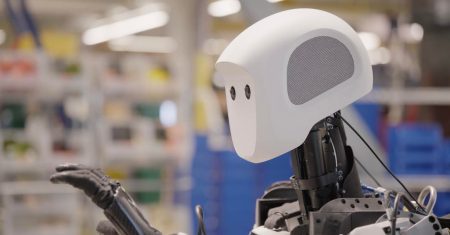CEO of Rallyware.
As of early this year, hiring is strong with “deskless” jobs, including restaurants and bars, construction sites and retail stores, according to the U.S. Department of Labor. Meanwhile, the growth leaders of the past decade-plus—tech companies like Microsoft and Alphabet—have shed positions in major layoffs.
For companies that use deskless workers to drive profits, how do you manage a productive workforce—maintaining employment while stabilizing prices—after adding jobs?
My answer is to transform operations—to imagine a workplace that points beyond familiar methods toward what I call “Performance Enablement.”
Peter Drucker And Operations Strategies Of The Past
Platitudes like “we’re a family here” and “be a team player” don’t necessarily hold water after painful transformations not only in the workplace but in daily life, with massive layoffs during the pandemic and a feeling among frontline workers that they were “sacrificial lambs” at this time.
Past models for business operations often target problems the company encounters when it’s already too late instead of changing the behaviors of the company itself in advance of the anticipated problem. Consider the great management intellectual Peter Drucker, a guru for generations of thought leaders.
Professor Alan Kantrow, in his Harvard Business Review piece “Why Read Peter Drucker?” writes about the difference between American and Japanese styles of business decision making, as Drucker considered them at a time when Japan was considered the second largest economy in the world.
Where American leaders “do not as a rule…consider all possible alternatives,” instead focusing “on the merits of a single option,” Japanese operations styles chart a new path for the business itself after intensive deliberating about all conceivable options. They change behaviors.
Though Drucker was writing for a different world—a post-World War II society in which it was assumed the future of work rested in white-collar offices—his insights on the strength of the Japanese model, which we might call an “enablement model,” can apply to the deskless, distributed workforce that is so dominant today.
This workforce even (and especially) includes the gig economy, a mover and shaker that is predicted to be worth $455 billion in 2023 in the U.S. alone. We can imagine the gig worker as the exemplary workforce of the post-pandemic world—autonomous, self-directed, guided by technology—in the same way that for Drucker, the in-office desk employee was the emblem of work in his day.
Along these lines, the pre-pandemic style of deskless operations was top-down; at many companies, training was paper-thin, and little got done without a supervisor present. What you have here is Drucker’s idea of American ops at the frontline level, trying to change results without considering the behaviors and performance patterns that have led to them.
I’d argue that this just isn’t going to fire up a post-pandemic workforce to operate at the highest level. Further, it’s not going to justify the expenditure of adding so many new jobs in the deskless workforce as wage growth lags behind inflation. This is deskless operations of the past, not the future.
So let’s consider a style of operations that is truly action- and results-oriented and not so reactive.
Performance Enablement And The New Deskless Workforce
“Performance Enablement” is an idea that has been percolating lately, both in HR and broader thinking about enterprise solutions. For our purposes, it represents ops “before the fact,” altering behaviors, practices and even manners of thinking by the deskless workforce.
The best way to show what “Performance Enablement” means is by studying the role that technology plays in today’s workforce. A customer might have asked a retail associate in the pre-pandemic world, “What kind of fishing pole do you recommend?” but because the associate is new and training budgets are low, she has to grab a supervisor.
Customer? Annoyed. Sale? Lost.
In the post-pandemic world, we can imagine a different scenario. If the associate has a tech platform to enhance her capabilities, she can take out her smartphone and quickly call up the pros and cons of different fishing poles for the specific customer.
Even better, she might have already digested this information through a pre-scheduled video triggered by her phone during her downtime, one which the technology intelligently inferred through her past performance data that she needed. (Her expertise might be in diving; hence she needs to ramp up her knowledge of fishing equipment.)
Or, one fishing pole brand might have been especially active in persuading her of its merits, sending her regular in-app updates. “One second,” she says, rather than five minutes, increasing efficiency and lowering customer acquisition costs.
There’s no need to go grab a superior—she has the tools to do it herself. The company, manifested by the in-hand app, is changing her behavior. It’s like the old proverb about teaching someone to fish rather than just handing them a fish.
Instead of “addressing symptoms,” as Kantrow’s essay put it, or in other words, disciplining this associate for not knowing enough about fishing lines, the “Performance Enablement” operations model helps and encourages her to know and do more.
What Path Will You Choose For The Deskless Workforce?
Adopting the “Performance Enablement” model for deskless operations requires more than just tech. It requires changing the way your enterprise thinks about its workforce, which should include using frontline data to intelligently drive sales performance and behaviors.
Ultimately, like Drucker’s Japanese style of ops (Kantrow writes of “the painstaking achievement of consensus”), deskless operations of the future will require cultivating buy-in among employees, and this might look differently depending on the specific business model and industry.
No matter what, the end goal is to have the workforce no longer feel like sacrificial lambs, like cogs in a machine, but like holistic members of the workforce whose personal success coincides with the success of the enterprise. Simply saying, “We’re a family here,” won’t do anymore. Beyond being ready for the future—are you ready for today?
Forbes Technology Council is an invitation-only community for world-class CIOs, CTOs and technology executives. Do I qualify?
Read the full article here










